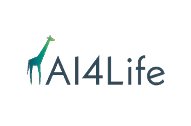Using AI to benefit science in EMBRC France’s Augmented Observatories
In France, three EMBRC marine stations – Villefranche-sur-Mer (IMEV) and Banyuls-sur-Mer (OOB) on the Mediterranean Sea, and Roscoff (SBR) on the English Channel – are involved in an exciting Augmented Observatories project (AO-EMBRC).
The project aims to create Europe’s first augmented marine observatory, combining genomics, quantitative imaging and physico-chemical data to learn more about how marine ecosystems are being impacted by environmental changes (both natural and human-induced).
To find out more, we spoke with Lionel Guidi, a researcher at CNRS, and Jean-Olivier Irisson, a computational ecologist at Sorbonne Université.
Lionel: We developed this programme based on the key skills our three research sites are known for. Banyuls-sur-Mer had a lot of experience with marine sensors, Roscoff Marine Station with genomic sampling and Villefranche (IMEV) with imaging. Bringing these together, we’ve developed a common way of looking at the biological component of the ocean.
Jean-Olivier: Within the scope of this programme, AI is mainly supporting the imaging side. The first task with imaging is to know what’s there – it’s a classic classification problem. We have images, we can have humans label some images, and then we want to have AI to imitate what human researchers do and accelerate the process. A human checks the results, but this helps us go through the data faster. It’s also more precise.
We’re also involving AI in our data analysis. There are AI techniques that are dedicated to combining separate complex datasets – for example, environmental conditions, imaging and genomics.
Lionel: AI also helps us merge, for example, satellite imagery with biological information in situ, and then finding links between the in-situ observation and the global picture.
Lionel: The ocean is being impacted by climate change and the way we try to detect this change and study how it is reacting is by looking at the biology. We hope to find markers or particular species that can indicate how the ocean is changing as a result of these impacts.
Jean-Olivier: From the long-term data that we had even before this programme started, we can retrospectively ask ecological questions from the time series. In this way, we can try to understand the processes or test general ecological theory in a way that has more power than what you would do from a single sampling campaign. The conclusions that you get are more robust than what you would get from any single study.
Jean-Olivier: One project used quantitative imaging to analyse 12 years of plankton samples from the northwestern Mediterranean Sea. Instead of just looking at taxonomic diversity – so, who’s there – we can also use the images to quantify what the plankton looks like at any point in time. They measured 45 features on more than 800,000 individual zooplankton and then used this to track how morphological diversity changed based on resource levels
They found that the plankton’s morphological diversity increased when food and plankton levels were low. This might be because different forms help the plankton compete for limited resources, making them better able to survive in tough conditions.
It’s a general ecological theory that diversity increases in environments with fewer resources, because the organisms have to compete for these resources, but there’s surprisingly little hard evidence for it – the most evidence is geographical. This paper was a good test of this theory, and the goal of the project is to enable other researchers in other places to do this too.
Lionel: Another project we supported used a combination of genomic and satellite data and AI tools to study photosynthesis and carbon fixation in marine piconanoplankton on a global scale.
Lionel: The Augmented Observatory services we offer through EMBRC France are linked to the specialties of our three marine sites. Most of the people who are interested in genomics go to Roscoff, for sensors they visit Banyuls-sur-Mer, and for imaging they’re more likely to contact IMEV for support – although all three sites have each of these capabilities. Lots of researchers from different disciplines benefit from our services, resources and expertise. We can help scientists generate data, collect, store and process samples, and we also have the expertise to collaborate on their analysis. We also provide web services that can help people upscale their projects while abiding by FAIR data protocols.
To find out more about the Augmented Observatories and EMBRC France’s other services.

To further support researchers in applying artificial intelligence to biological imaging, EMBRC partnered in the EU-funded AI4Life project. A key outcome of this initiative is the BioImage Model Zoo, a community platform offering access to AI models tailored for the analysis of bioimages.

